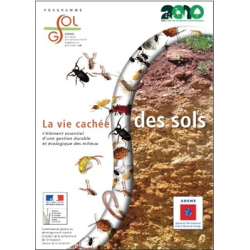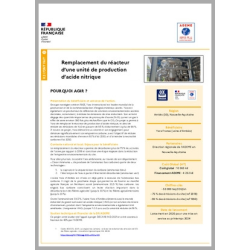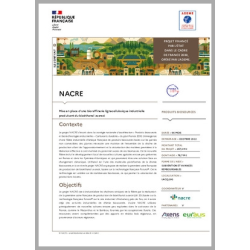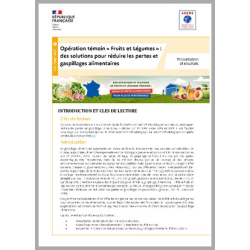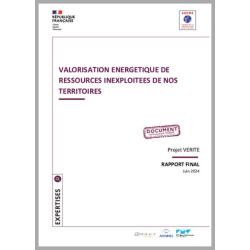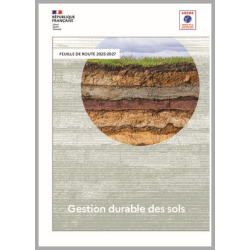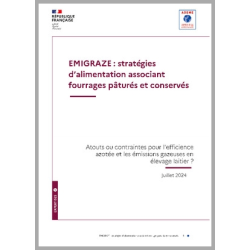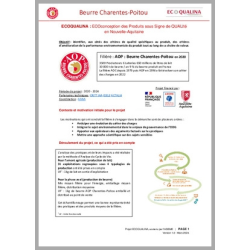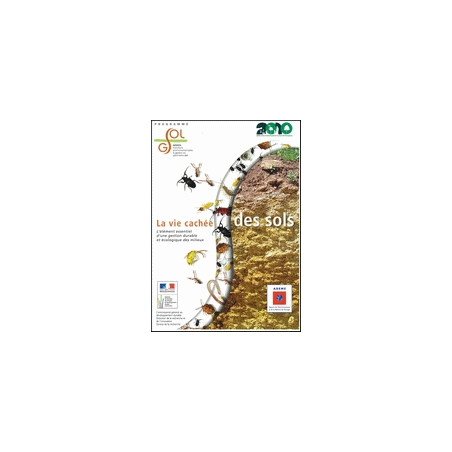
7 Happy Families - The Hidden Life of Soils
Présentation
Every day we walk, run and play on the soil, without regard for the world of tiny organisms that it hosts. But just a teaspoon of soil may contain millions of living organisms belonging to thousands of different species. Around 25% of all animal and plant species that have been described in the world inhabit or spend much of their lives in the soil. Our knowledge about these organisms is still limited because they live in a dark opaque environment and most of them are too small to be visible to the naked eye. A large portion of these species have not yet been described and named by specialists - unknown species live in our gardens! This Happy Families card game, in the style of Go Fish!, will transport you into the secret world under your feet. Discover the hidden organisms that inhabit the soil, how they live, and how to study them. The 7 Families : Microfauna and Microorganisms : These are the smallest and most numerous soil organisms. Mesofauna: Strange invertebrates are found in this family - tardigrades, enchytraeids,mites, and small insects such as collembolans, diplurans and proturans. Macrofauna : Organisms of this family are visible to the naked eye. Megafauna : These organisms are much larger, but not very numerous in soils. You will have to be patient to see them. Soil : Soil biodiversity depends on soil diversity. Plant : Plants contribute to soil biodiversity and feed soil organisms with organic matter. Scientific : Scientists such as Charles Darwin have enhanced our knowledge on life in soils.
Caractéristiques
- Référence Ademe
- 7021
- Date de mise en ligne
- 03/11/2021
- Type de document
- Vulgarisation d'expertise
- Nb. de pages
- 11 P
Every day we walk, run and play on the soil, without regard for the world of tiny organisms that it hosts. But just a teaspoon of soil may contain millions of living organisms belonging to thousands of different species. Around 25% of all animal and plant species that have been described in the world inhabit or spend much of their lives in the soil. Our knowledge about these organisms is still limited because they live in a dark opaque environment and most of them are too small to be visible to the naked eye. A large portion of these species have not yet been described and named by specialists - unknown species live in our gardens! This Happy Families card game, in the style of Go Fish!, will transport you into the secret world under your feet. Discover the hidden organisms that inhabit the soil, how they live, and how to study them. The 7 Families : Microfauna and Microorganisms : These are the smallest and most numerous soil organisms. Mesofauna: Strange invertebrates are found in this family - tardigrades, enchytraeids,mites, and small insects such as collembolans, diplurans and proturans. Macrofauna : Organisms of this family are visible to the naked eye. Megafauna : These organisms are much larger, but not very numerous in soils. You will have to be patient to see them. Soil : Soil biodiversity depends on soil diversity. Plant : Plants contribute to soil biodiversity and feed soil organisms with organic matter. Scientific : Scientists such as Charles Darwin have enhanced our knowledge on life in soils.
- Référence Ademe
-
7021
- Auteurs
-
BLANCHART Eric
CHEVALLIER Tiphaine
SAPIJANSKAS Jurgis
BISPO Antonio
GUELLIER Camille
ARROUAYS Dominique
INSTITUT DE RECHERCHE POUR LE DEVELOPPEMENT
MINISTERE DE L'ECOLOGIE ET DU DEVELOPPEMENT DURABLE
ADEME
AFES
- Public(s)
-
Grand public / particuliers
- Type de document
-
Vulgarisation d'expertise
- Thématique
-
Agriculture, alimentation, forêt, bioéconomie
- Collection
-
Keys to action
- Date d'édition
-
01/2010
- Date de mise en ligne
-
03/11/2021
- Nb. de pages
-
11 P
- Langue
-
Anglais
Documents associés
Chinese version of 7 Happy Families - The Hidden Life of Soils
Vulgarisation d'expertise
Mis en ligne le : 02/11/2021



